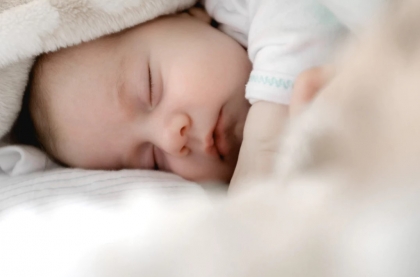Why Is Sleeping On Back Considered Best For Babies?
The sleeping position of the baby plays a significant role in determining whether they will have a safe and sound sleep.
SIDS or sudden infant death syndrome is just a part of unexpected infant deaths called sudden unexpected death in infancy or SUDI and is linked to the sleeping position of the baby. Therefore, it is essential to know about safe sleeping positions for babies, along with a few tips to reduce the risk of SIDS. One of the effective ways to avoid the risk is to make a healthy baby, less than a year old, sleep on its back, i.e., in the supine position.
In this post, MomJunction tells you about all the ideal positions in which a baby can sleep and gives tips for ensuring that infants and babies can sleep safely.
The Good And Bad Positions For A Baby To Sleep
It is essential to learn about the safe and unsafe sleeping positions for a baby to deal with the above risks.
- Sleep on back
- Healthy babies born full-term should be placed on their backs for naps, short periods of rest, and sleep at night.
- ‘Sleep on the back’ position was found to lessen the risk of SIDS in babies, as it keeps airways open.
- The US National Institute of Child Health and Human Development (NICHD) labeled this as the best sleeping position for babies.
- Since the American Academy of Pediatrics made the ‘back-to-sleep’ recommendation in 1992, the SIDS rate has dropped more than 50%. The ‘back-to-sleep’ recommendation was later campaigned as ‘safe to sleep’.
Risks Involved In ‘Sleep On Back’ Position
If infants are placed on the back for a long time, it may lead to ‘positional plagiocephaly,’ a case of flattened or misshapen head and ‘brachycephaly,’ the flattening of the back of the skull. The shape will become normal by the time they turn one year and rarely requires any treatment Simple repositioning techniques may be employed to avoid such conditions. They include:
- Increasing ‘tummy time’ of the baby when awake
- Making the baby rest on the other side of the head rather than the flat side.
- Cutting down the time spent by babies in carriers or car-seats.
- Getting more ‘cuddle time’.
- Changing the direction of the baby in the crib so that they do not always view the same things, and in one direction always.
- Sleep on stomach
Several theories discourage parents from making a baby sleep on the stomach because:
- It could put pressure on a baby’s jaw, reducing the airway and restricting breath.
- If the baby sleeps on the stomach, i.e., in the prone position, they may be lying with the face very close to the sheets and breathing the same air.
- The baby may suffocate while sleeping on the stomach if the mattress is very soft.
- The baby may also breathe in microbes present on the mattress.
When Can Babies Sleep On Stomach?
In rare cases, due to a medical condition, doctors may advise parents to make the baby sleep on the stomach rather than the back.
A few physicians believe that sleeping on the stomach could be good for babies with severe gastroesophageal reflux or certain upper-airway malformations like Pierre Robin Syndrome, which lead to acute airway obstruction episodes. However, no recent study supported or refuted the benefits. Healthcare providers should consider the potential benefits and risks before recommending this position.
The danger of vomiting was the most important argument for making the baby sleep on its stomach. This is because doctors believed that it would be dangerous if the baby vomits while sleeping on the back. They argued that babies might choke on their vomit, due to lack of enough strength to turn the head. However, babies sleeping on their backs may not have as much difficulty turning their heads and vomiting the contents of the stomach out.
Also, you may make a baby with colic sleep on the stomach to relieve them of gas. However, do not do it immediately after feeding them. Let there be some gap between the feed and the sleep time
- Sleep on the side
- It is unsafe for babies to sleep on the side because they may end up on the tummy, increasing the risk of SIDS.
- In addition to the good and bad sleeping positions, you must also know about the sleeping practices that could lead to a sudden unexpected death in infants.
- Sleeping Practices That Could Lead To Sudden Unexpected Death In Infancy (SUDI)
SUDI includes both SIDS and other fatal sleeping accidents. Here are a few practices that could lead to SUDI:
- Making the baby sleep on the stomach or side.
- Putting the baby to sleep on soft surfaces such as mattress, sofa, waterbed, pillow, or lamb’s wool, either with or without a parent around.
- Covering the baby’s head or face with bedding, which may cause accidental suffocation and overheat.
- Smoking during pregnancy or after childbirth.
SIDS can be a significant risk and should be considered when you follow certain steps to ensure that your baby sleeps safely.
Original article: https://www.momjunction.com/articles/safe-sleeping-positions-for-babies-and-newborns_0094200/
Read in Magazine
You must be logged in to post a comment.
click here to log in













































